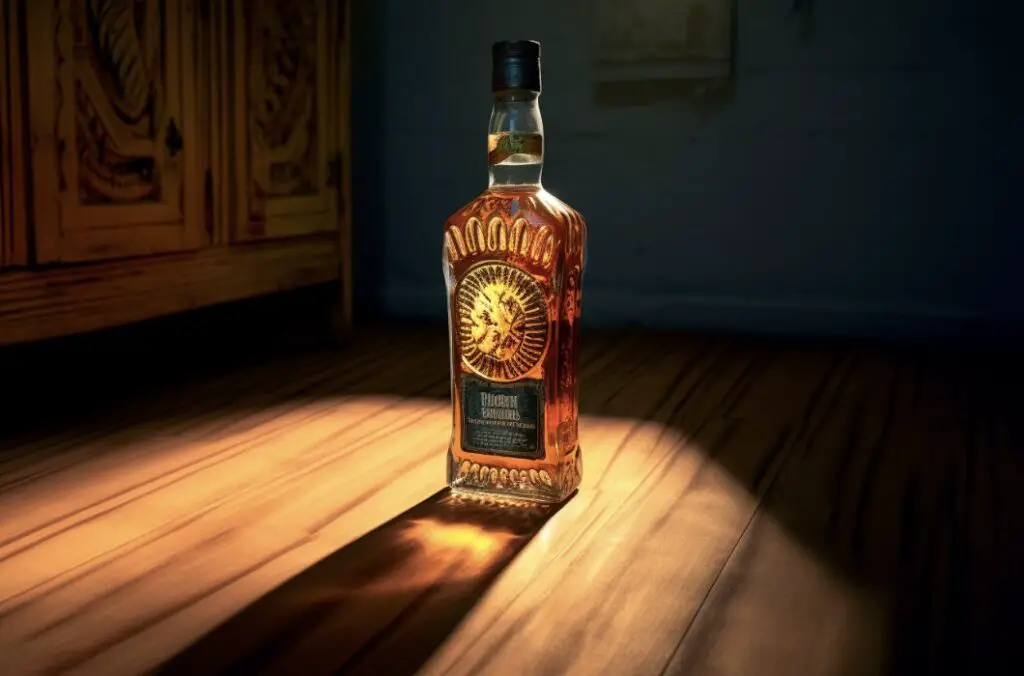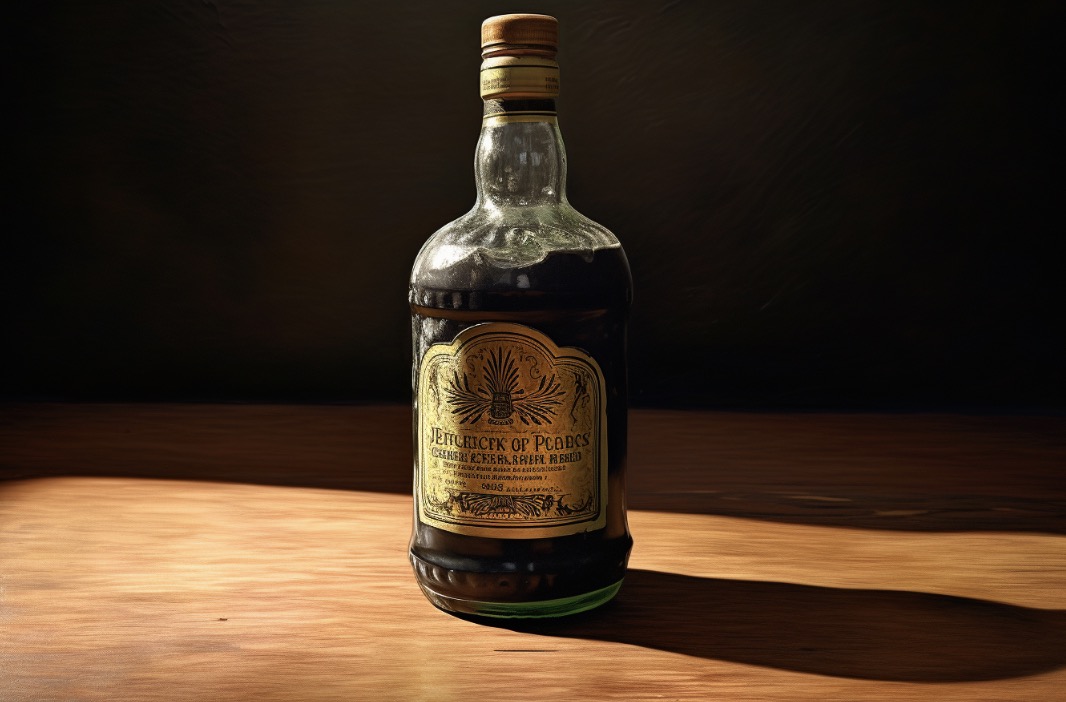Is there yeast in tequila? The short answer is no – it has been left out during distillation.
However, yeast, specifically Saccharomyces cerevisiae, plays a crucial role in the fermentation process of tequila production before distillation.
This blog post will delve into the world of tequila, exploring the role of yeast in its production, the different types of yeast used, and the impact of yeast on flavor profiles.
As an experienced brewer, I’ve had the pleasure of experimenting with various yeasts and witnessing firsthand how this humble organism can create such diverse and delightful spirits.
Tequila is distilled and does not contain yeast
Tequila is a distilled alcoholic beverage that is primarily made from the blue agave plant. The distillation process plays a crucial role in transforming the fermented agave juice into tequila by separating the alcohol from other impurities.
The traditional method of tequila production involves the following steps:
- Harvesting: Mature blue agave plants, which take around 8 to 12 years to reach optimal maturity, are harvested. The leaves are removed, and the core, known as the piña, is extracted.
- Cooking: The piñas are then cooked in large ovens, typically made of stone or stainless steel, to convert the starches into fermentable sugars. Traditional methods involve baking the piñas in brick ovens, while modern techniques employ autoclaves for faster and more efficient cooking.
- Milling: The cooked piñas are crushed or shredded to extract the agave juice. In traditional methods, a large stone wheel called a tahona is used to crush the piñas, while modern methods employ mechanical shredders.
- Fermentation: The extracted agave juice, also known as the must or mosto, is transferred to fermentation tanks. Yeast is added to the must, which initiates the fermentation process. During fermentation, the yeast consumes the sugars in the must and converts them into alcohol, producing a liquid called tepache.
- Distillation: The fermented tepache is then distilled to separate the alcohol from the impurities. Tequila typically undergoes a double distillation process. In the first distillation, the tepache is heated in large copper stills or stainless steel pots called alembics. The heat causes the alcohol to vaporize, rise, and then condense into a liquid in a separate container. This process is known as the “first distillate” or “ordinario.”
- Second Distillation: The first distillate is further purified through a second distillation process. It is transferred to another still and undergoes distillation once again. This second distillation helps to remove any remaining impurities and refine the tequila’s flavor and character. The resulting liquid is called “tequila blanco” or “silver tequila.”
Regarding yeast, it’s important to note that distillation is a process that involves separating and concentrating alcohol from a fermented mixture. Yeast, being a microorganism responsible for fermentation, does not carry over during distillation.

As the fermented liquid is heated and vaporized, the alcohol evaporates and then condenses into a liquid in a separate container. Meanwhile, the yeast and other non-volatile components, such as solids and certain impurities, are left behind in the still or discarded as byproducts.
This separation process ensures that the distilled tequila is free from yeast and primarily contains concentrated alcohol.
The Role of Yeast in Tequila Production
Yeast is a fundamental component in the production of alcoholic beverages, including tequila.
During the fermentation process, yeast converts the sugars found in the cooked agave plant into alcohol and other byproducts, such as carbon dioxide and various flavor compounds.
This process can take anywhere from two days to a week, depending on the specific yeast strain and conditions of the fermentation.
Types of Yeast Used in Tequila Production
There are two primary types of yeast used in tequila production: wild yeast and commercial yeast. Wild yeast, as the name suggests, is naturally occurring and can be found on the agave plant, as well as in the environment surrounding the distillery.
Wild yeast strains tend to produce more complex and unique flavor profiles, as they can vary greatly depending on the specific location and conditions.
Commercial yeast, on the other hand, is a cultivated and controlled yeast strain, often Saccharomyces cerevisiae. This type of yeast allows for more consistent and predictable fermentation, as well as a faster fermentation process. Many distilleries will use a combination of both wild and commercial yeast to achieve their desired flavor profile and production efficiency.
Yeast and Flavor Profiles
The specific yeast strain used in tequila production can have a significant impact on the final flavor profile of the spirit. Yeast-derived flavors can include fruity, floral, spicy, or even earthy notes, depending on the strain. Additionally, wild yeast strains can contribute a greater variety of flavor compounds due to their natural variation.
It is important to note that other factors, such as the type of agave plant, the cooking method, and the distillation process, also play a significant role in the final flavor profile of tequila.
Yeast Selection and Cultivation
The selection and cultivation of yeast for tequila production is a crucial aspect of the process. Distilleries must carefully consider the desired flavor profile, fermentation speed, and consistency when selecting a yeast strain. Some distilleries maintain their own yeast cultures, ensuring a consistent strain and flavor profile, while others may experiment with different strains to create unique and innovative tequila products.
Fermentation Conditions and Yeast Health
Maintaining the health and vitality of yeast during the fermentation process is essential for successful tequila production. Factors such as temperature, pH, and nutrient availability can all influence yeast health and activity. Distilleries must carefully monitor and control these factors to ensure optimal fermentation and prevent the production of off-flavors or stalled fermentation.
The Impact of Yeast on tequila quality
The quality of tequila can be greatly influenced by the yeast used during fermentation. A healthy, well-managed yeast population will produce a clean, flavorful spirit with minimal off-flavors. Conversely, poor yeast health or an unsuitable yeast strain can result in a subpar product with undesirable flavors or insufficient alcohol content. As such, the selection and management of yeast is a critical aspect of tequila production.
Conclusion
In summary, yeast plays a crucial role in the production of tequila, from the fermentation process to the final flavor profile. Understanding the impact of yeast on tequila production and quality can help both producers and consumers appreciate the complexity and craftsmanship that goes into creating this beloved spirit.
Here are 10 facts about yeast and its role in tequila production:
1. Yeast is a crucial component in tequila production.
2. Yeast is responsible for converting sugars into alcohol during the fermentation process.
3. The two main types of yeast used in tequila production are wild yeast and commercial yeast.
4. The specific yeast strain used can have a significant impact on the final flavor profile of the spirit.
5. Some distilleries maintain their own yeast cultures to ensure consistent flavor and fermentation.
6. Factors such as temperature, pH, and nutrient availability can influence yeast health and activity during fermentation.
7. The health and vitality of yeast during fermentation is essential for successful tequila production.
8. A well-managed yeast population will produce a clean, flavorful spirit with minimal off-flavors.
9. Poor yeast health or an unsuitable yeast strain can result in a subpar tequila product.
10. The selection and management of yeast is a critical aspect of tequila quality and production.
FAQs
Can you drink alcohol if you have a yeast allergy?
If you have a yeast allergy, it is advisable to exercise caution when consuming alcohol. While yeast is used in the fermentation process of alcoholic beverages, the amount of yeast proteins present in the final product is typically minimal. However, some individuals with yeast allergies may still react to these trace amounts.
It is important to note that yeast allergies can vary in severity, and the specific reaction can differ from person to person. Some individuals may only experience mild symptoms, such as itching or hives, while others may have more severe reactions, including difficulty breathing or anaphylaxis.
To determine whether you can drink alcohol with a yeast allergy, it is recommended to consult with a healthcare professional, such as an allergist or immunologist. They can perform specific tests to assess your sensitivity to yeast proteins and provide personalized advice based on your individual condition.
In some cases, individuals with yeast allergies may be able to tolerate certain types of alcohol. Distilled spirits, such as vodka or gin, are often considered safe as the distillation process typically removes most, if not all, yeast proteins. However, it is still crucial to read labels carefully, as some flavored spirits or mixed drinks may contain added ingredients that could trigger an allergic reaction.
In summary, if you have a yeast allergy, it is best to consult with a healthcare professional to determine whether it is safe for you to consume alcohol. They can provide personalized advice based on your specific allergy and help you make informed decisions regarding your alcohol consumption.
What alcohol can I drink on Candida diet?
When following a Candida diet, it is important to avoid or limit the consumption of alcohol as it can worsen the symptoms of Candida overgrowth. Alcohol, in general, can disrupt the balance of gut bacteria and weaken the immune system. However, if you choose to consume alcohol while on a Candida diet, there are a few options that are considered to have lower levels of sugar and yeast:
1. Clear spirits: Vodka, gin, and tequila are generally lower in sugar and yeast compared to other alcoholic beverages. However, it is crucial to avoid mixing them with sugary mixers or fruit juices.
2. Dry wines: Dry white wines like Sauvignon Blanc or dry red wines like Cabernet Sauvignon may have lower sugar content compared to sweet or dessert wines. It is advisable to consume wine in moderation and choose organic or sulfite-free options if possible.
3. Light beers: Some light beers may have fewer carbohydrates and lower sugar content compared to regular or craft beers. However, it is important to note that even light beers can still contain some yeast and gluten, which may be problematic for individuals with Candida overgrowth.
It is essential to remember that alcohol should be consumed in moderation, and it is best to consult with a healthcare professional or nutritionist to determine if alcohol is appropriate for your specific Candida diet plan.
What alcohol has most yeast?
The alcohol that typically contains the highest concentration of yeast is beer. Yeast is responsible for the fermentation process in beer production, converting sugars into alcohol and carbon dioxide. Brewers add specific strains of yeast to the wort (unfermented beer) during fermentation, allowing them to consume the sugars and produce alcohol. While the yeast concentration varies depending on the beer style, it is generally higher in beers with higher alcohol content, such as strong ales, barleywines, or imperial stouts. However, it is important to note that the yeast concentration does not directly correlate with alcohol content, as other factors like the fermentation process and yeast strain also play significant roles.
What alcohol can I drink with yeast allergy?
If you are allergic to yeast, it is important to avoid consuming any alcoholic beverages that contain yeast or are fermented using yeast. Yeast is a common ingredient in the fermentation process of many alcoholic beverages, including beer, wine, and certain spirits.
However, there are some alcoholic options that may be suitable for individuals with a yeast allergy. These options typically involve beverages that are not fermented using yeast or have undergone a process that removes or significantly reduces the yeast content. It is important to note that individual sensitivities can vary, so it is always recommended to consult with a healthcare professional before consuming any alcoholic beverage if you have a yeast allergy.
Some potential options that may be considered include:
1. Distilled spirits: Distillation typically removes yeast proteins, which are responsible for allergic reactions. Therefore, distilled spirits such as vodka, rum, tequila, gin, and whiskey may be safe to consume for individuals with a yeast allergy. However, it is crucial to ensure that no yeast-based flavorings or additives have been included in the production process.
2. Gluten-free beer: While most traditional beers contain yeast, there are gluten-free beer options available that are brewed without yeast or use alternative fermentation methods. These beers are typically made from grains such as sorghum, rice, millet, or corn, which do not require yeast for fermentation. It is important to carefully read the labels or contact the brewery to confirm the absence of yeast.
3. Ciders: Ciders are fermented using apples or other fruits, and yeast is typically involved in the fermentation process. However, some ciders may undergo filtration or pasteurization processes that remove or reduce the yeast content. It is advisable to check the labels or contact the manufacturer to ensure the cider is suitable for individuals with a yeast allergy.
Remember, it is always essential to carefully read labels, contact manufacturers, and consult with a healthcare professional to determine the suitability of any alcoholic beverage if you have a yeast allergy.
What alcohol has yeast in it?
All alcoholic beverages are produced through the process of fermentation, which involves the conversion of sugars into alcohol by yeast. Therefore, all alcoholic beverages contain yeast at some point during their production. However, it is important to note that yeast is typically not present in the final product as it settles out or is filtered before bottling.
What alcohol can I drink with yeast intolerance?
If you have yeast intolerance, it is important to avoid consuming any alcoholic beverages that contain active yeast. The yeast used in brewing plays a crucial role in the fermentation process, converting sugars into alcohol.
However, some alcoholic beverages undergo processes that may eliminate or significantly reduce yeast content, making them potentially tolerable for individuals with yeast intolerance. Here are a few options to consider:
1. Distilled Spirits: Distilled spirits like vodka, rum, gin, and tequila are generally safe for those with yeast intolerance. The distillation process removes yeast, leaving behind a higher alcohol concentration. However, it’s essential to ensure that no flavorings or additives containing yeast have been added after distillation.
2. Wine: While most wines are fermented with yeast, some winemakers use sterile filtration or pasteurization techniques to remove or kill the yeast before bottling. Look for wines that explicitly state they are “yeast-free” or “filtered” to reduce the risk of yeast intolerance symptoms.
3. Ciders: Traditional apple cider is typically fermented with yeast, but there are yeast-free or low-yeast alternatives available. Look for ciders that are specifically marketed as “yeast-free” or “filtered” to ensure they are suitable for your intolerance.
4. Gluten-free Beers: If you have both yeast intolerance and gluten intolerance, you may consider trying gluten-free beers. Many gluten-free beer options are made with alternative grains and brewed without yeast.
It is crucial to read labels carefully and consult with a healthcare professional or allergist to determine which alcoholic beverages are safe for you based on your specific yeast intolerance and any other dietary restrictions you may have.




